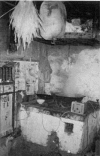Current status and prevention strategy for coal-arsenic poisoning in Guizhou, China
- PMID: 17366768
- PMCID: PMC3013247
Current status and prevention strategy for coal-arsenic poisoning in Guizhou, China
Abstract
Arsenic exposure from burning coal with high arsenic contents occurs in southwest Guizhou, China. Coal in this region contains extremely high concentrations of inorganic arsenic. Arsenic exposure from coal-burning is much higher than exposure from arsenic-contaminated water in other areas of China. The current status and prevention strategies for arsenic poisoning from burning high-arsenic coal in southwest Guizhou, China, is reported here. Over 3,000 arsenic-intoxicated patients were diagnosed based on skin lesions and urinary arsenic excretion. Non-cancerous toxicities and malignancies were much more common and severe in these patients than in other arsenic-affected populations around the world. The high incidence of cancer and arsenic-related mortality in this cohort is alarming. Chelation therapy was performed but the long-term therapeutic effects are not satisfactory. The best prevention strategy is to eliminate arsenic exposure. Funds from the Chinese Government are currently available to solve this arsenic exposure problem. Strategies include the installation of vented stoves, the use of marsh gas to replace coal, health education, the improvement of nutritional status, and the use of various therapies to treat arsenic-induced skin and liver diseases.
Figures
References
-
- National Research Council . Arsenic in the drinking water. Washington, DC: National Academy Press; 1999. p. 310.
-
- Rahman M. Arsenic and contamination of drinking-water in Bangladesh: a public-health perspective (editorial) J Health Popul Nutr. 2002;20:193–7. - PubMed
-
- Sun G. Arsenic contamination and arsenicosis in China. Toxicol Appl Pharmacol. 2004;198:268–71. - PubMed
Publication types
MeSH terms
Substances
Grants and funding
LinkOut - more resources
Full Text Sources
Medical


